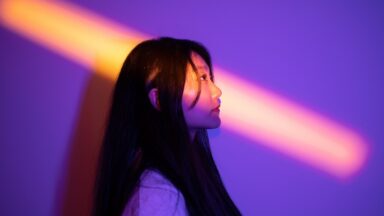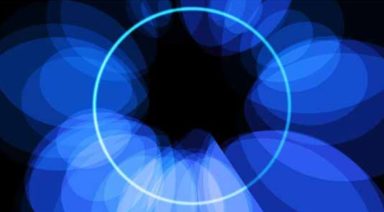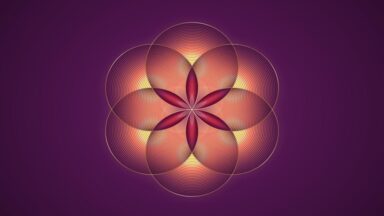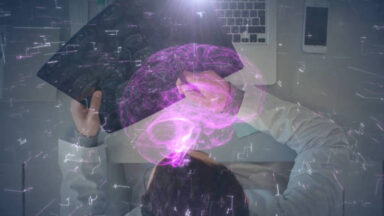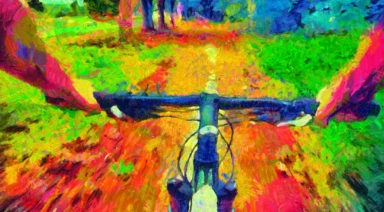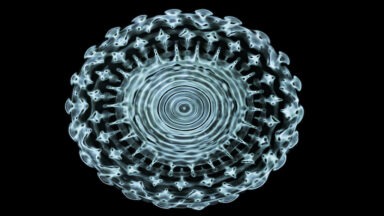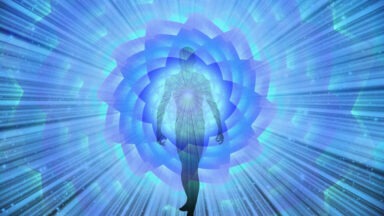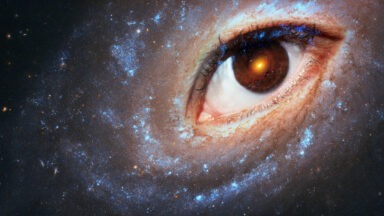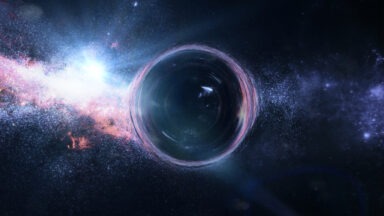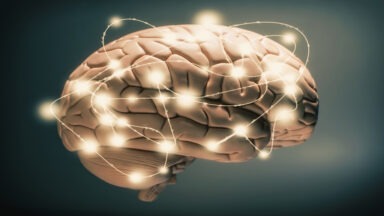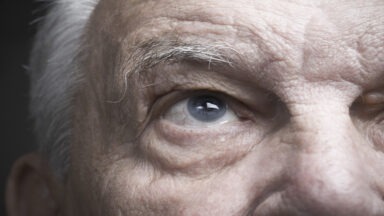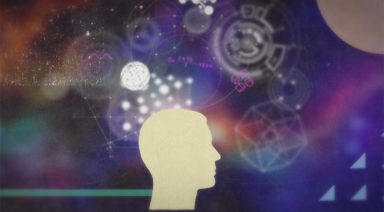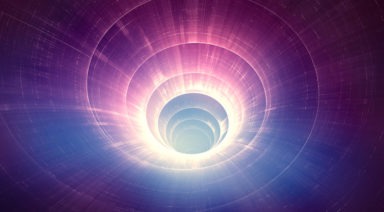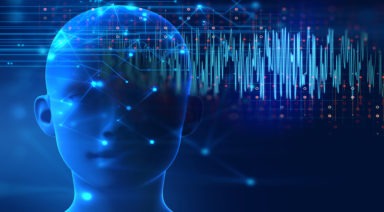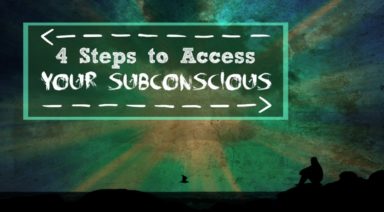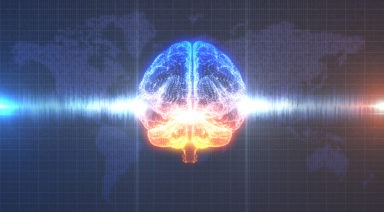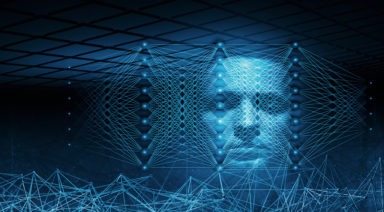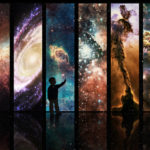What is Astral Projection?
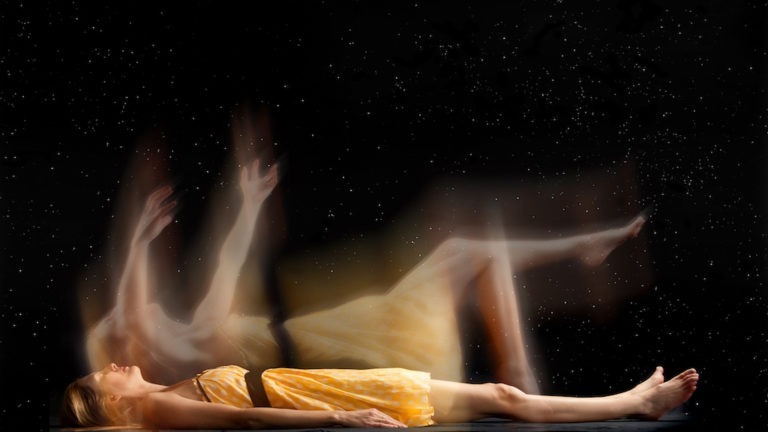
Call it what you like — dream body, astral body, energy body, Buddhist light body, Taoist diamond body, Egyptian ka, Tantric subtle body, Hindu body of bliss — and in Christianity, the experience of different “heavens,” i.e. “I know a man who was caught up to the third heaven. Whether it was in our out of body, I do not know,” from Corinthians 12:1-4. The subtle body is a universal human experience, and apparently part of our standard human design like toenails and kidneys. It is this subtle body that projects astrally and is active during unconscious and lucid dreaming; astral projection and dreaming often go hand-in-hand as “out-of-body” experiences, or OBEs.
The subtle body, when cultivated, can survive the physical body as a matrix for consciousness, and astral projection and lucid dreaming are part of spiritual training paths for subtle body cultivation. Neophytes confuse the subtle body with the soul or spirit, two additional aspects of multi-dimensional humans.
Out of Body Experiences and Astral Projection
The OBE can be intentional or involuntary, as with near-death events when people report finding themselves floating near the ceiling of their hospital rooms, perhaps observing medical staff attempting to revive them. Trauma, illness, or water and food deprivation, as with Native American vision quests, can trigger OBEs. Lucid dream states are opportunities for intentional OBEs. For the purposes of this article, OBEs may be spontaneous, and astral projection a conscious choice, though some would argue otherwise.
Essentially, the OBE begins with an experience of leaving the body and consciously observing it from a detached perspective. With practice and lucidity, awareness can be directed to locations or activities like flight. Yes, flight. If you’ve had flying dreams — literal flying, no 747 required — or being in the sky, you’ve had OBEs. Some say that we have regular OBEs during sleep, often hovering a few inches over our physical bodies.
Neuroscientists are puzzled — while the experience is no longer dismissed out of hand by medical professionals, science holds the view that OBEs involve neurological or brain dysfunction. After his own experience, Dr. Raymond Moody MD became interested in near death OBEs, and for decades interviewed hundreds of experiencers and collected data, defining common qualities of OBEs. Moody identified nine common elements of a near-death OBE — some experiencing all, some, only two or three.
Benefits of OBE
The tantrics mastered lucid OBE and dream states to overcome the fear of death by learning that we are not our “bodies.” They also discovered that the physical body can experience deep healing during OBEs — the mind can be tough on the body. And rather than losing time to practice meditation during sleep, yogis continued working through the night while the body rested.
Some athletes learn lucid dreaming to practice and visualize their game. By working in a dream or out-of-body, not only do they visualize, they have a “felt sense” of their practice, and can actually acquire the muscle memory for winning habits. Others benefit from the opportunity to explore past lives as well as accelerated personal development.

It is our energy, or subtle body that comes and goes from our physical form.
Astral Projection Methods
There are dozens of methods to learn conscious OBE and astral projection. There are two approaches — one is to keep the mind awake while the body falls asleep. It’s tricky — the mind wants to do what the body is doing. The goal is to take the body into deeper and deeper states of relaxation without drifting into unconsciousness. Yoga Nidra is one method. Once the body enters sleep state, practitioners simply “roll” out of their physical form.
Ancient yogis would tie two frogs together before sleep. Once tied, the frogs would continuously croak— a yogi would use the sound to anchor awareness as the body drifted into sleep, and either leave the body, or enter lucid dream states. If, during a dream, the yogi could no longer hear the frogs, he/she knew lucidity had been lost, and could “wake” again within the dream.
How to Astral Project/Travel
Monroe Institute Steps
Bob Monroe, founder of the leading research organization in the field of human consciousness called The Monroe Institute, penned a body of work titled “Journeys Out of the Body” in 1971 in which he provides a detailed outline for how to astrally project one’s self in seven steps:
- Step 1: Relax, both physically and mentally.
- Step 2: Enter a hypnagogic state, or half-sleep.
- Step 3: Deepen the state by prioritizing mental sensation over physical sensation.
- Step 4: Pay attention to the presence of vibration in your environment, which becomes apparent in a state of deep attention.
- Step 5: Incur the vibration in your physical body, and relax into its presence. The purpose of this is to gently jiggle the subtle body out of the physical body.
- Step 6: Focus your thoughts on leaving the limbs and the torso, and try to do so one at a time.
- Step 7: Known as “lifting out,” focus on effortlessly drifting out of your physical body.
The Astral Projection Rope Technique
From the work of Robert Bruce, founder of the Astral Dynamics movement, the rope technique is regarded one of the most accessible astral projection methods.
Step 1: Relax the physical body by visualizing each muscle.
Step 2: From your space of relaxation, enter a vibrational states; this should feel like an amplified version of a cell phone’s vibration mode pulsations coursing through the body.
Step 3: Imagine a rope hanging above you.
Step 4: Using the astral, or subtle, body, attempt to hold on to the rope with both hands. The physical body remains completely relaxed.
Step 5: Begin to climb the rope, hand over hand, all the while visualizing reaching the ceiling above you.
Step 6: Once you are aware of your full exit of the physical body, you are able to explore the astral plane.
Lucid Dreaming Techniques
Again, there are numerous lucid dreaming techniques. Some are designed to train the sleeper to wake within the dream, others offer methods of staying lucid while letting the body fall asleep.
A Nootropic Approach
Yes, it’s sounds weird. Nicotine has specific actions on brain chemistry — but no, it’s not about smoking. Considered a cognitive enhancer, nicotine is gaining fans among biochemical brain hackers.
Many, using nicotine patches to quit smoking, have inadvertently discovered what happens when they forget to remove a patch before sleep. Nicotine can induce hyper-realistic, but bizarre dreams that are so outrageous that many simply say to themselves, “Omg. This MUST be a dream. It’s too nuts to be anything else.” And voila — lucidity is attained. This is not an endorsement of the method, as many report nightmares when using nicotine.
Lucid Dreaming With Habit and Repetition
We attain lucidity the instant we recognize we’re in a dream state. Some people train by asking themselves, several times a day for days or weeks, “is this a dream?” The question eventually gets stuck in the place songs and jingles get stuck and are hard to unstick — things like “Afternoon Delight” by the Starlight Vocal Band. You know what we’re talking about.
The premise is that the question begins to habitually repeat by itself, and that eventually the mind will ask during a dream. When the dreamer answers, “why yes, this IS a dream!” they achieve lucidity.
The best opportunities for becoming lucid within a dream are during REM (rapid eye movement) sleep. This stage happens in the first two hours after we fall asleep and before we wake up. By waking and going back to sleep during the night we increase REM sleep time. Some use the sleep/wake method by setting interval alarms during the night, getting up for a few minutes, and going back to sleep with an intention of keeping the mind awake. If awakened during a dream, immediately go back to sleep — if possible, re-enter the dream with lucidity.
What Is Remote Viewing and How Is It Developed?
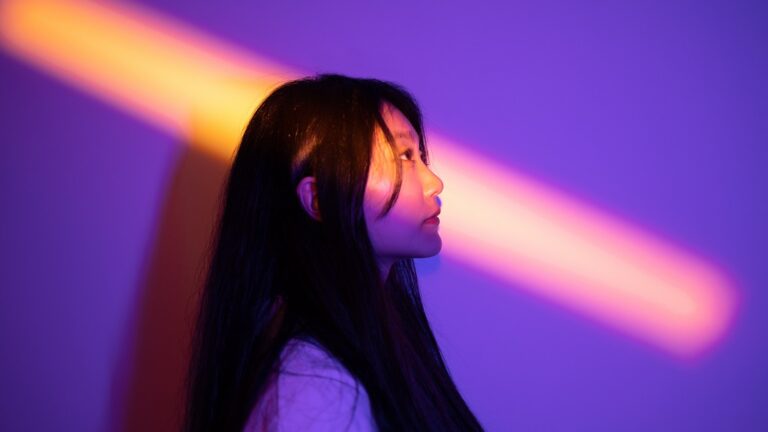
Table of Contents
- What Is Remote Viewing?
- Stanford Research and the Origins of Remote Viewing
- Understanding the Difference Between Clairvoyance and Remote Viewing
- Remote Viewing Training: How to Practice and Actionable Techniques
- Can Everyone Develop Remote Viewing?
- Spiritual Benefits of Developing Remote Viewing
- Myths and Facts About the Art of Remote Viewing
- The Continuing Debate Around Remote Viewing
What Is Remote Viewing?
Remote viewing is one of the most advanced psychic abilities and a structured practice of extrasensory perception (ESP) that allows a remote viewer to describe or gather information about a distant target site using only the mind. Unlike traditional sensory perception, this technique seeks impressions of locations, objects, or events without relying on the five physical senses. Supporters view it as a disciplined method of accessing hidden information, while skeptics often consider it a form of psychic phenomena without scientific proof.
The concept of remote viewing has been explored in both spiritual and experimental settings, where researchers and practitioners alike have tested whether the human mind can access information beyond normal perception. Reports of successful sessions describe participants sketching landscapes, describing structures, or identifying key features of a location they have never physically visited.
The process follows a multi-stage protocol. A typical remote viewing session begins with relaxation or meditation to quiet mental distractions, followed by setting a clear intention to connect with the chosen target. During the session, the viewer records raw sensory impressions, such as shapes, textures, sounds, or temperatures, before attempting to interpret them. Patience, consistent training, and repeated sessions are considered essential for refining accuracy and building confidence in the results.
Stanford Research and the Origins of Remote Viewing
Remote viewing moved to formal study in the early 1970s when physicists Russell Targ and Harold Puthoff began experiments at the Stanford Research Institute (SRI) in California. Their work sought to determine whether the human mind could obtain information about distant places or objects without ordinary sensory input, a concept they referred to as “remote perception.”
At SRI, trained participants known as remote viewers attempted to describe hidden or distant target sites, locations, objects, or events, while shielded from all conventional cues. Sessions followed a controlled protocol in which viewers recorded mental impressions such as shapes, textures, and spatial relationships. According to reports, some results produced descriptions accurate enough to be statistically significant beyond chance, sparking interest from military and intelligence agencies.
This research eventually attracted funding from the U.S. government, including the CIA and the Department of Defense, under programs like the now-declassified Stargate Project. These initiatives explored whether remote viewing could aid intelligence gathering during the Cold War and led to decades of classified testing. While the studies generated intriguing data, critics highlighted issues with experimental controls and the often vague nature of the information obtained. Today, despite Targ’s continued advocacy and writings on the subject, mainstream science generally regards remote viewing as pseudoscience, noting that no reproducible evidence confirms it as a reliable phenomenon.
Understanding the Difference Between Clairvoyance and Remote Viewing
Clairvoyance and remote viewing are psychic abilities used to obtain information beyond the physical senses, yet their goals and methods differ in key ways. Clairvoyance is the ability to receive spontaneous or intentional visual impressions about people, places, or events outside normal sensory range. It can arise as a natural gift or be developed through training, allowing a person to perceive images, colors, symbols, or entire scenes that appear within the mind’s eye.
Remote viewing, by contrast, is a carefully structured form of remote perception designed to describe details of a distant target site without physical access. This skill follows a defined protocol to collect accurate and verifiable data. During a remote viewing session, the viewer records raw sensory impressions, such as shapes, sounds, textures, or spatial relationships, while using systematic methods to reduce conscious analysis and outside influence.
The range of information also differs. Clairvoyants may receive broad, symbolic visions or intuitive messages that require interpretation, including insights about a person’s emotions, potential future events, or abstract themes. Remote viewers, on the other hand, focus on describing specific, tangible characteristics of the target, such as geographic features, structural elements, or measurable details that can later be checked against reality.
Although both practices claim access to knowledge beyond the five senses, clairvoyance remains more subjective and open-ended, while remote viewing emphasizes repeatable steps and data that can be compared to actual outcomes. These distinctions give each practice its own set of applications and training approaches, offering different pathways for exploring extrasensory perception.

How to Remote View
Remote viewing is presented as a disciplined way to gather information about a distant target site through focused mental perception. Rather than waiting for spontaneous visions, a remote viewer follows structured steps to capture sensory impressions and record them for later verification. Training focuses on relaxing the body, calming the mind, and developing the ability to notice subtle impressions without letting analysis interfere.
Mental Preparation and Focus
Begin by creating a quiet environment where you can relax and settle your thoughts. Deep breathing or meditation reduces mental noise and strengthens concentration. Practitioners set a clear intent to perceive details about the target while keeping thoughts neutral. This focused state supports the reception of impressions that might otherwise be missed.
The Viewing Process
During a remote viewing session, a monitor or assistant may provide a neutral cue for the hidden target. Quickly note the first impressions—colors, shapes, sounds, or temperatures—without naming the object or trying to interpret it. Recording these raw perceptions before analysis helps preserve data that can later be matched to the target. Treat each sensation as information, even if it seems random.
Development and Refinement
Consistent practice strengthens accuracy and detail in remote viewing work. After each session, compare your notes with the actual target to identify patterns and improve precision. Over time, this routine builds confidence and reliability while helping you expand from basic impressions to more complex sensory details.
Beginner Practice Exercise
Developing remote viewing requires practice and a systematic approach. Here is a simple exercise you can do to start training this skill:
- Select Targets: Ask a friend or family member to choose 5–10 varied images from magazines, such as landscapes, people, or objects.
- Prepare the Envelopes: Have your assistant place each image face down in a sealed envelope and keep the contents secret.
- Calm Your Mind: Find a quiet spot, close your eyes, and breathe deeply to reduce distractions.
- Set the Stage: Write down the date, time, and any distracting thoughts to clear your mind before you begin.
- Describe the Target: Without opening the envelope, write down the first basic impressions that arise, textures, colors, patterns, movements, without judgment or analysis.
- Draw a Sketch: Create a rough sketch of the shapes or structures you sensed. Artistic skill is not important; focus on capturing the essence of the impressions.
- Get Feedback: Open the envelope and compare your notes and sketch with the actual image. Reflect on similarities and differences to learn from the session.
This foundational exercise provides immediate feedback and helps develop the mental discipline that supports more advanced techniques. By repeating the process and reviewing your notes after every session, you begin to recognize subtle patterns, sharpen your attention to small sensory details, and train your mind to capture impressions before analysis sets in. Over time, these habits create the steady focus and self-awareness needed to attempt longer sessions, more complex target sites, and the structured protocols used by experienced remote viewers.
Can Everyone Develop Remote Viewing?
Remote viewing is a skill that most people can learn and improve with steady practice. While a few individuals may show natural sensitivity from the start, consistent training is what allows the majority of students to strengthen their abilities over time. Progress depends less on innate “psychic powers” and more on patience, focus, and regular sessions that teach the mind to notice subtle impressions.
Key factors that support development include:
- Regular practice: Short, frequent sessions help train attention and reduce mental noise.
- Strong concentration: The ability to maintain a quiet, alert mind is critical for receiving accurate impressions.
- Open mindset: Curiosity and a willingness to record even faint or unexpected impressions prevent early filtering.
- Structured methods: Following a step-by-step protocol or guided training provides consistent feedback and measurable improvement.
- Patience and perseverance: Results may start small, but skill grows as the mind learns to separate fleeting thoughts from genuine target information.
Spiritual Benefits of Developing Remote Viewing
Remote viewing is more than a method for gathering impressions about a distant target site. Practicing it over time can transform the way you experience the world and your inner self. Training as a remote viewer calls for quiet focus, disciplined attention, and regular sessions, and these habits naturally foster deeper awareness and a stronger sense of connection. Many people find that the mental discipline required for remote viewing work carries over into everyday life, creating benefits that go far beyond the sessions themselves.
Below are some of the most frequently reported spiritual and personal gains:
- Spiritual connection: Regular practice encourages a stronger bond with the universe and with your own inner life. This deeper connection can spark insight into personal purpose and the larger patterns of existence.
- Expanded awareness: Reaching for information beyond ordinary senses stretches perception and helps you recognize the interdependence of all things. Over time, many viewers describe a heightened sensitivity to subtle patterns in daily life.
- Sharper intuition: Recording and reviewing impressions during a remote viewing session strengthens subtle perception. Many practitioners notice clearer gut feelings and more confidence when making important choices.
- Relaxation and balance: The quiet, focused state required for each session naturally promotes deep relaxation. This meditative practice can reduce stress and support steady emotional balance.
- Personal growth: Working with remote viewing often reveals self-imposed limits. Meeting those challenges builds patience, resilience, and a broader perspective on the capabilities of the human mind.
Myths and Facts About the Art of Remote Viewing
Remote viewing has always carried an air of mystery, which makes it easy for rumors and misconceptions to spread. Sorting myth from reality helps anyone interested in the practice approach it with realistic expectations and a clear understanding of what this remote perception technique can and cannot do.
Remote Viewing Myths
- For psychics only: Many believe that only gifted psychics or psychic mediums can succeed as remote viewers. In truth, structured training protocols show that people without any prior extrasensory experience can learn the process.
- Dangerous to the mind: Some worry that remote viewing might cause mental harm or invite negative forces. When practiced with proper guidance, it is no more harmful than meditation or focused visualization.
- Unlimited access: A frequent claim is that a skilled viewer can observe anything, anywhere, at any time. In practice, sessions often yield partial impressions, symbolic fragments, or ambiguous details rather than unlimited surveillance.
- Guaranteed accuracy: Movies and sensational reports sometimes suggest that trained viewers always describe a target site with perfect precision. In reality, even experienced practitioners have sessions where impressions are vague, contradictory, or incorrect.
- Proof of supernatural powers: Supporters sometimes frame successful sessions as unquestionable evidence of psychic powers. Skeptics counter that hits can stem from coincidence, selective memory, or subconscious pattern recognition, so results remain open to debate.
Remote Viewing Facts
- Requires steady practice: Consistent training, patience, and honest feedback are essential. Progress comes from refining mental discipline and learning to separate subtle impressions from imagination.
- Documented research history: Programs at institutions like the Stanford Research Institute (SRI) and government projects such as Stargate show that the topic has been tested under controlled conditions, even though the scientific community remains divided on its validity.
- Not infallible: A single session may contain both accurate and inaccurate details. Statistical studies have found results better than chance in some cases, but no protocol eliminates human error or subjective interpretation.
- Often labeled a pseudoscience: Despite decades of experiments, remote viewing lacks a mechanism recognized by mainstream science. Researchers describe it as a form of extrasensory perception (ESP), but its status remains unproven and controversial.
The Continuing Debate Around Remote Viewing
Remote viewing remains a topic that straddles the line between curiosity, research, and controversy. Decades after the early experiments at SRI and the CIA’s Stargate Project, interest in the practice continues in spiritual circles, private training groups, and online communities. Supporters point to statistically significant studies and personal experiences as evidence that the human mind may have abilities beyond ordinary senses. Skeptics view those same results as chance, methodological flaws, or creative interpretation rather than proof of genuine psychic phenomena.
Whether approached as a meditative discipline, a tool for exploring consciousness, or simply a historical curiosity, remote viewing invites people to test the limits of perception for themselves. Practicing relaxation, careful observation, and structured feedback can strengthen focus and intuition even if no “psychic spy” skills emerge. By understanding the myths, research history, and training methods, readers can decide how much of this psychic phenomenon feels meaningful while maintaining a grounded perspective on what remains unverified.


